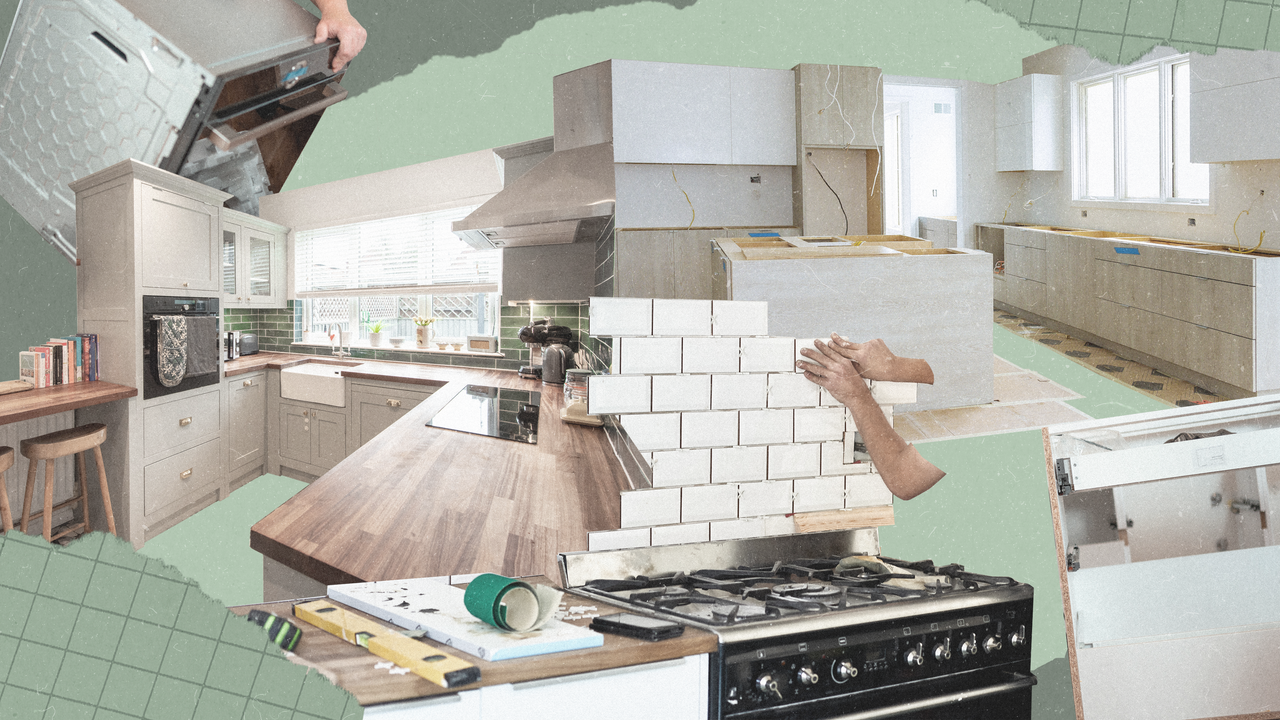Credit: architecturaldigest.com

Donna Garlough, author of Your Home, Your Style and owner of the Boston boutique Monroe Home & Style concurs, noting that “unless you’re a plumber, carpenter, or have a library of power tools, it’s easy to get in over your head and stuck without a working kitchen for an indefinite amount of time,” she says. “When in doubt, hire a pro.”
Of course, there are certain DIY tasks that might be fun to tackle—but be patient with yourself. Garlough says cosmetic upgrades, like painting cabinetry and adding tile backsplash, might be a good place for handy people to start.
What are the biggest challenges of a kitchen remodel?
The way we live has changed significantly in the last few decades. The older the house, the more a kitchen’s layout needs to be reconsidered, says Pallrand. “Traditional kitchens, even those from a house as recent as the 1960s or ’70s, used the model of the kitchen as a utility space where food is made and served in another room,” Pallrand explains. “Nowadays, the kitchen is much more [of] a living room for entertaining or checking emails or doing homework.” Turning a kitchen into a public space can often involve expansion and reorientation to the rest of the house, and that’s a pricey endeavor. Plus, the older the house, the more the systems will need to be upgraded to today’s codes for safety. Luckily, updating the kitchen will have a positive effect on your home value, providing a return on investment you’re likely to recoup come selling time, no matter the size of the kitchen.
What factors affect kitchen remodel cost?
In a kitchen renovation—even one that may have started out very small-scale—“you’re kind of doing everything,” says Mazzarini. He describes kitchens as being like sweaters, as “sometimes, when you pull the strings, you end up in a much bigger project than you set out to accomplish.” Since kitchens involve appliances, plumbing fixtures, millwork, hard surfaces, and lighting, it’s one of the most technical rooms of a house. Combining utilities and lots of small details will affect the price tag of your kitchen overhaul. Another one of the most costly endeavors is upgrading the footprint by expanding the size of your kitchen or reorienting the layout. If you’re looking to reduce costs, Pallrand recommends spending money on better appliances that promise lasting durability and experience fewer problems. Another important factor to consider is where you live, per Mazzarini, since labor and access to materials depends on location.
How can you save money on the remodel of a kitchen?
Sticking with the existing layout is a great way to save money, says Garlough, who notes that a cosmetic upgrade is always going to be less expensive than a full remodel. From blowing out walls and adding more cabinetry, to moving electrical and plumbing, heavy changes will make your overall kitchen remodel cost go up.
One surefire way to keep makeover costs down is by avoiding the latest trends, since it’s unlikely that you’ll want to undergo an invasive project like a kitchen renovation again in five years when you regret your style choices, per Garlough. “Check back in periodically to make sure you’re staying focused on what you originally wanted: things like upgraded appliances, a better work triangle, well-made cabinetry, smart storage, and the like,” says Garlough. “And if you find your budget skyrocketing, take care to prioritize those elements rather than the zellige tile, pot filler faucet, or handblown pendants you discovered halfway through the process.”
To save on the cost of a kitchen remodel, Pallrand also recommends avoiding the latest trends, since a traditional kitchen will look appropriate in 10 or 100 years. “Sticking with what works will save on any remodel costs,” he says.










